Turkish Pide Bread (Ramazan Pidesi)
Nov 25, 2020, Updated May 21, 2021
This post may contain affiliate links.
Turkish pide bread is a traditional no knead flatbread that’s fluffy and so easy to make. Fresh out of the oven, this bread is fluffy and perfect with some cheese.
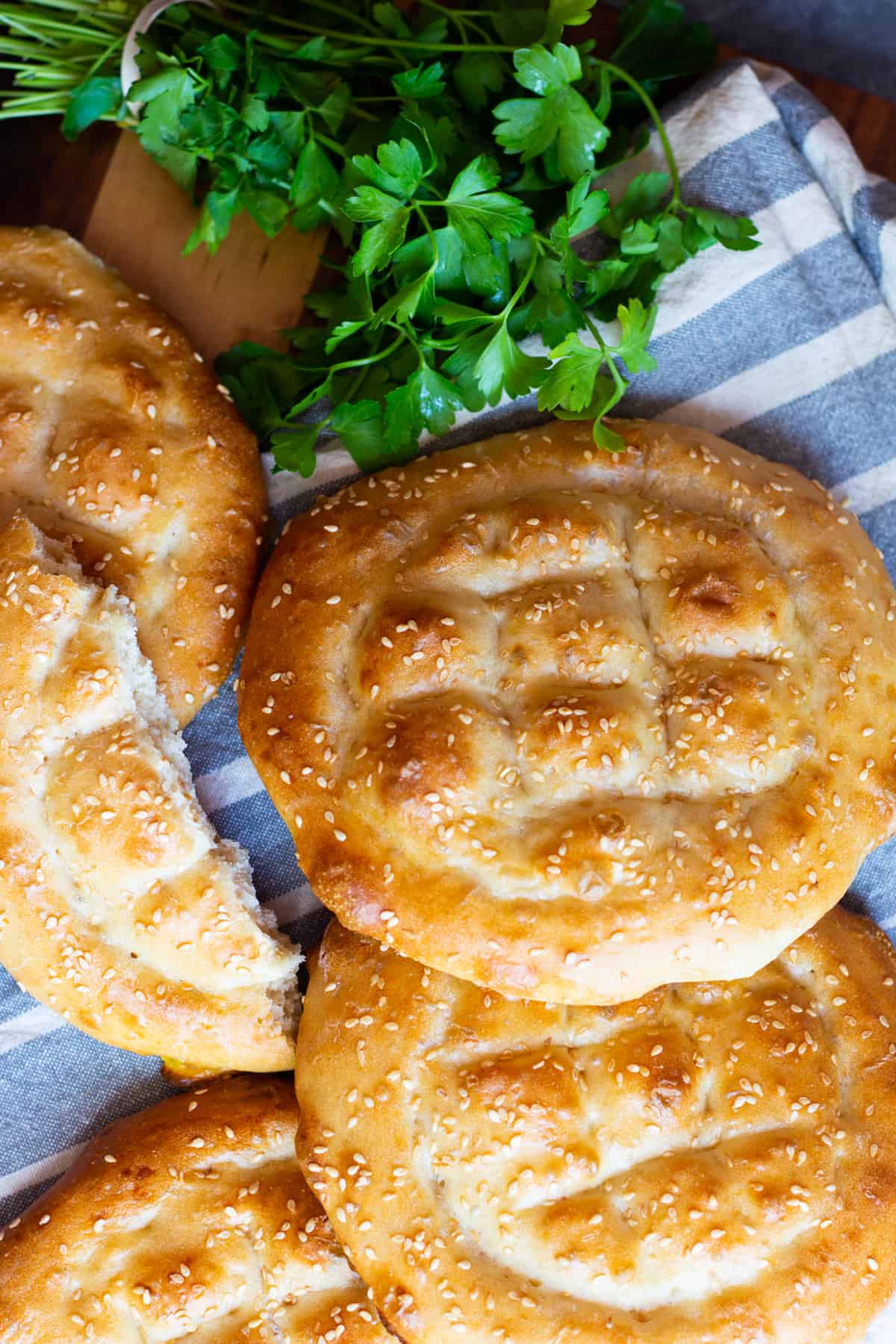
You know my love for homemade bread. From traditional Persian barbari and simit to lavash and pita bread, I love having fresh bread on the table everyday. I guess that’s a trait I picked up from being raised in Iran and living in Turkey. Bread is a staple of our culture and cuisine, is always respected and rarely wasted.
Table of Contents
Turkish pide bread – Ramazan pidesi – A classic Turkish flatbread
There are bakeries in every corner of Istanbul. The smell of freshly baked simit and other types of bread such as bazlama is so mesmerizing that it’s almost impossible to not walk into each and every bakery to grab a loaf of bread.
Ramazan pidesi is a classic Turkish bread that’s a bit similar to Persian barbari. It’s common to find it through the holy month of Ramadan in Turkey. People who practice fasting during the month of Ramadan usually break their fast with this bread.
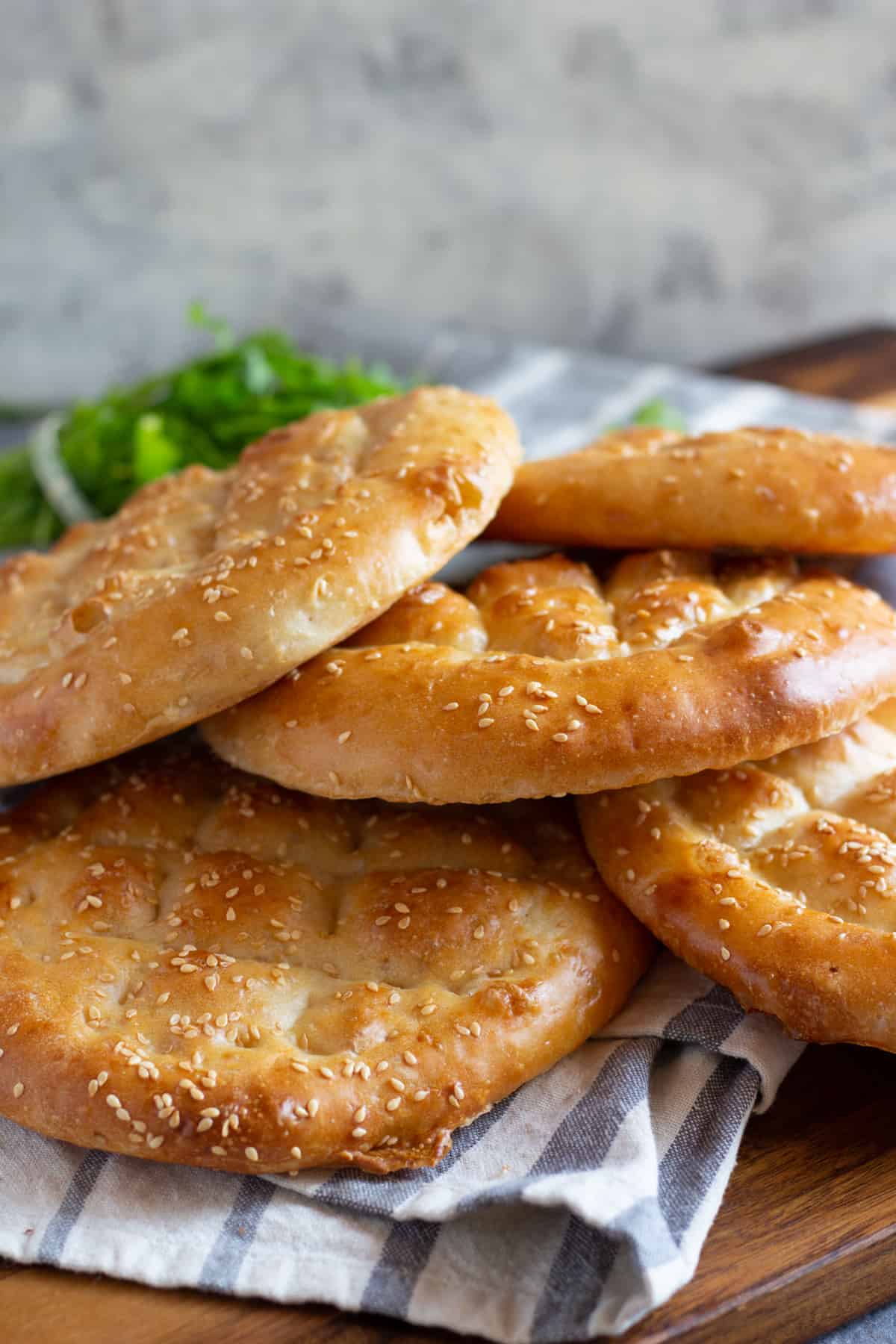
Pide is soft and fluffy on the inside and to keep it fresh and soft, I usually cover it with wet paper towels right out of the oven. I love having this bread for breakfast. However, it makes a great addition to any main dish as well.
The ingredients
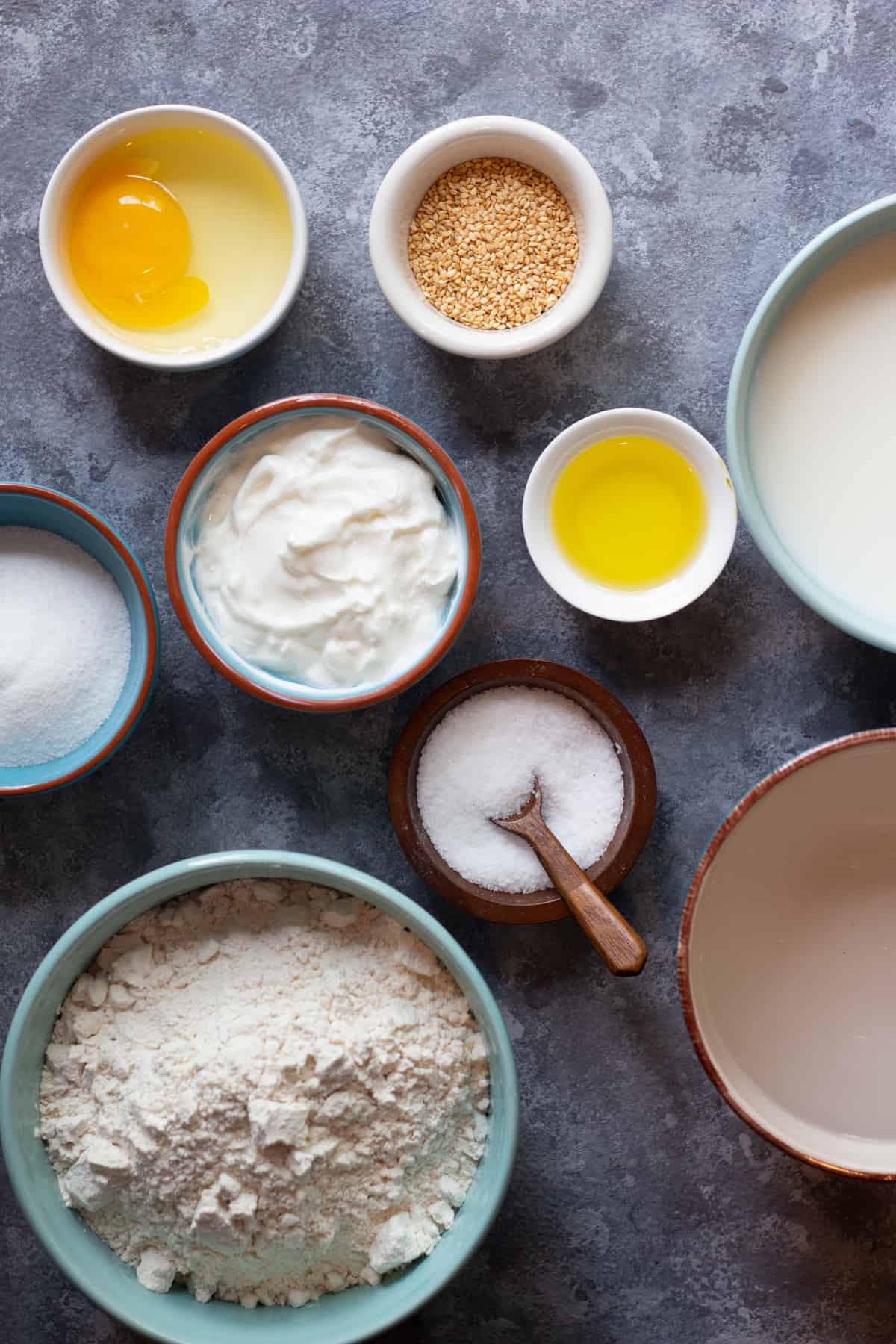
To make this pide bread recipe, you need a few ingredients which you probably already have on hand.
- Milk – Unlike many bread recipes that only use water, this recipe also calls for warm milk which makes this bread very soft. You can use whole milk or 2% milk for this recipe.
- Instant dry yeast – You don’t need to bloom it in advance. Simply add it to all the ingredients. However, if using active dry yeast, bloom it in the warm water with sugar first and then proceed with the recipe.
- Egg – We are going to use the white in the dough and the yolk for the glaze.
- All purpose flour – You need about 4 1/2 cups of flour for this recipe, maybe less. Keep a close eye and make sure you’re not adding too much flour.
- Yogurt – When mixed with egg yolk, it adds a nice color to the bread.
How to make Turkish pide bread
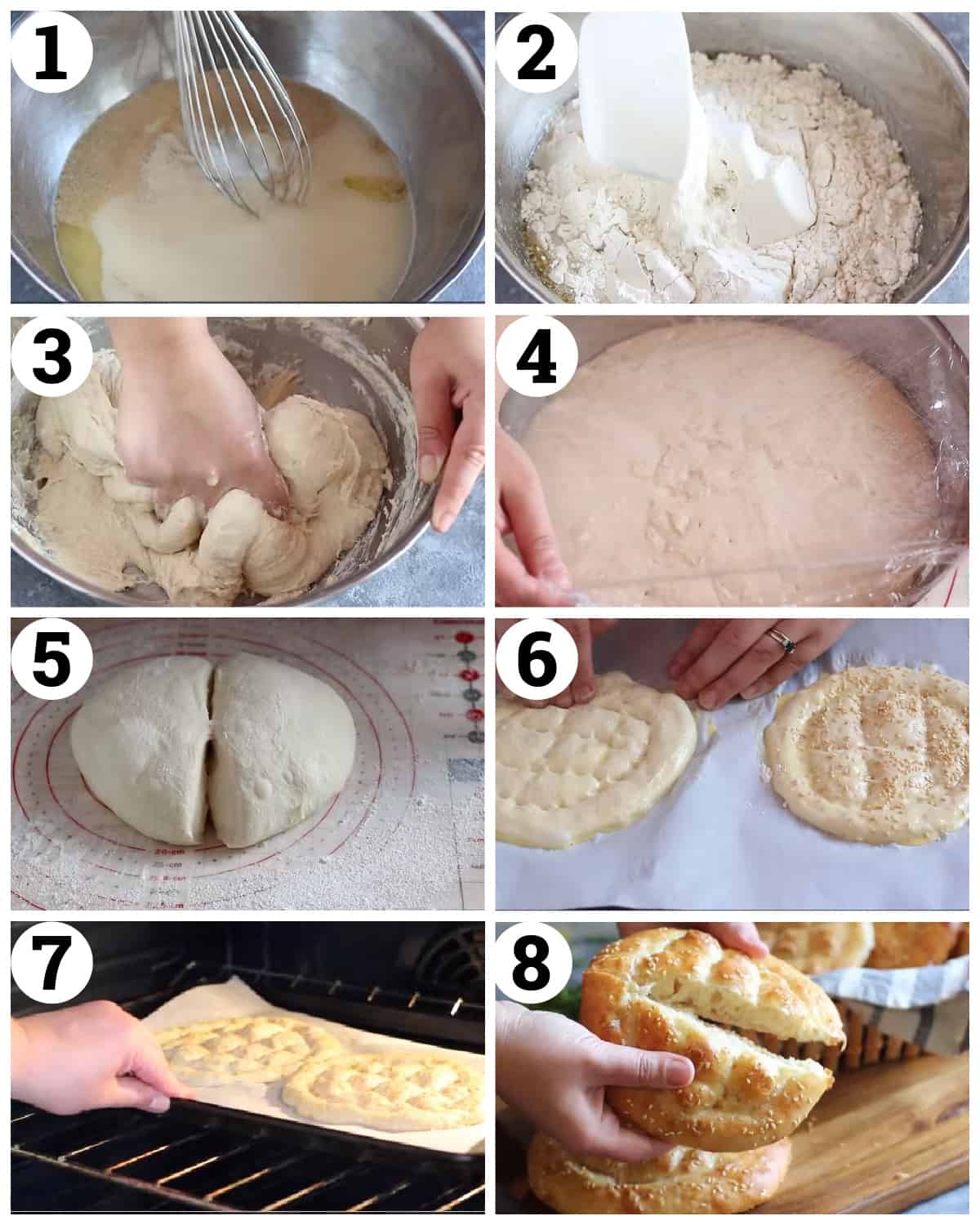
Make the dough
In a large bowl whisk milk, water, olive oil, sugar, salt, instant dry yeast and egg white. Add the flour one cup at a time and mix well until combined and the dough comes together. Cover the bowl and let it sit for 30 minutes.
Shape the dough
Sprinkle the surface generously with flour. Transfer the dough to the surface. Shape it into a boule and make sure it’s floured on all sides. Cut the dough into 8 pieces. Place two of the dough balls on a baking sheet lined with parchment paper. Cover gently and let them rise for 20 minutes.
Prepare the glaze and final shaping
preheat the oven to 400ºF and place an empty baking dish in the lower rack. In a small bowl mix egg yolk, yogurt and water. Brush a bit of the glaze on the dough balls and with your fingers, spread them into round circles with about 1/2 inch thickness.
Using your fingers, first make indentations on the dough about 1 inch from the edge to make a circle. Then with your fingers make diagonal indentations in two different directions to make diamonds inside that circle. Repeat the same process with the remaining 6 dough balls.
Bake the bread
Once the oven is hot make the indentations again on the dough. Top with sesame seeds and place the baking sheet on the middle rack. Fill the baking dish on the lower rack with 2 cups of water and close the oven door. Bake in the oven for 15-18 minutes until golden on top. Once out of the oven, cover the loaves with a damp paper towel. The steam of the bread with be trapped and your bread will be soft and fluffy. Repeat the baking process with the remaining loaves.
Serving suggestions
You can serve this bread as part of breakfast with cheese, labneh, butter, jam and all the other fixings. It also goes very well with all kinds of egg dishes such as menemen, cilbir (Turkish eggs and yogurt), or nargesi (Persian spinach and eggs).
You can also serve it with main dishes such as ground beef stew, roasted cauliflower soup and red lentil soup.
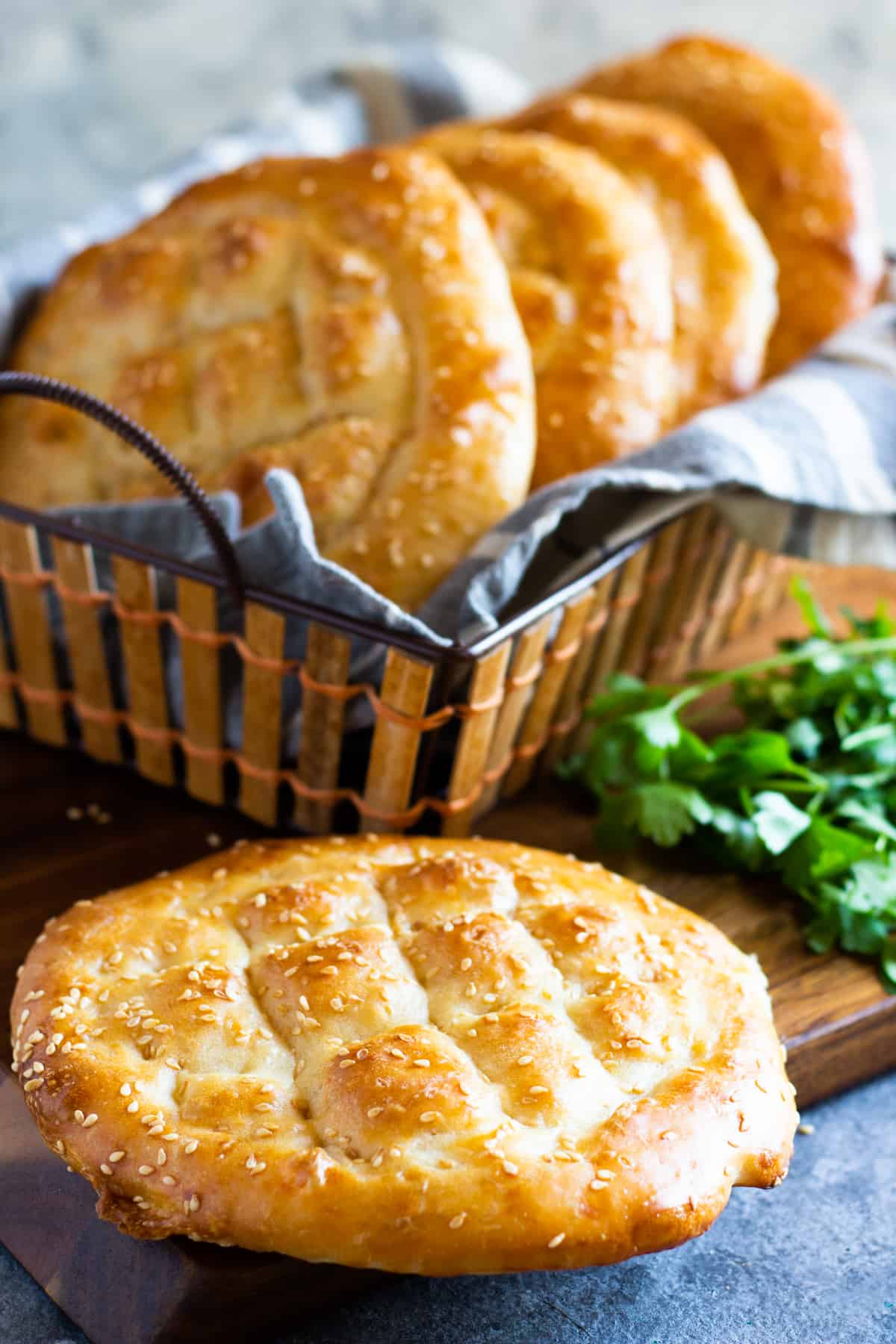
Frequently asked questions
Store this bread in a plastic bag or a bread bag and keep at room temperature for up to 2 days. You can refrigerate Turkish pide bread for up to a week as well.
It’s possible to use some whole wheat flour to make this bread. Substitute 1 1/2 cup of whole wheat flour for all purpose flour and use only 3 1/2 cup all purpose flour.
I don’t advise using more whole wheat flour since it’s a “denser” type of flour and would change the texture unless you change the ratios of the liquids as well which will call for a few more rounds of testing.
You probably have added more flour than needed. Add enough flour so the dough comes together but is still sticky (check out the video). Too much flour will make the dough denser and the bread harder.
Yes. Make the dough and let it rise. Then divide it into 8 balls (or 2 balls if you’re making large loaves). Cover them and refrigerate for up to 24 hours. Let the dough balls come to room temperature before baking them.
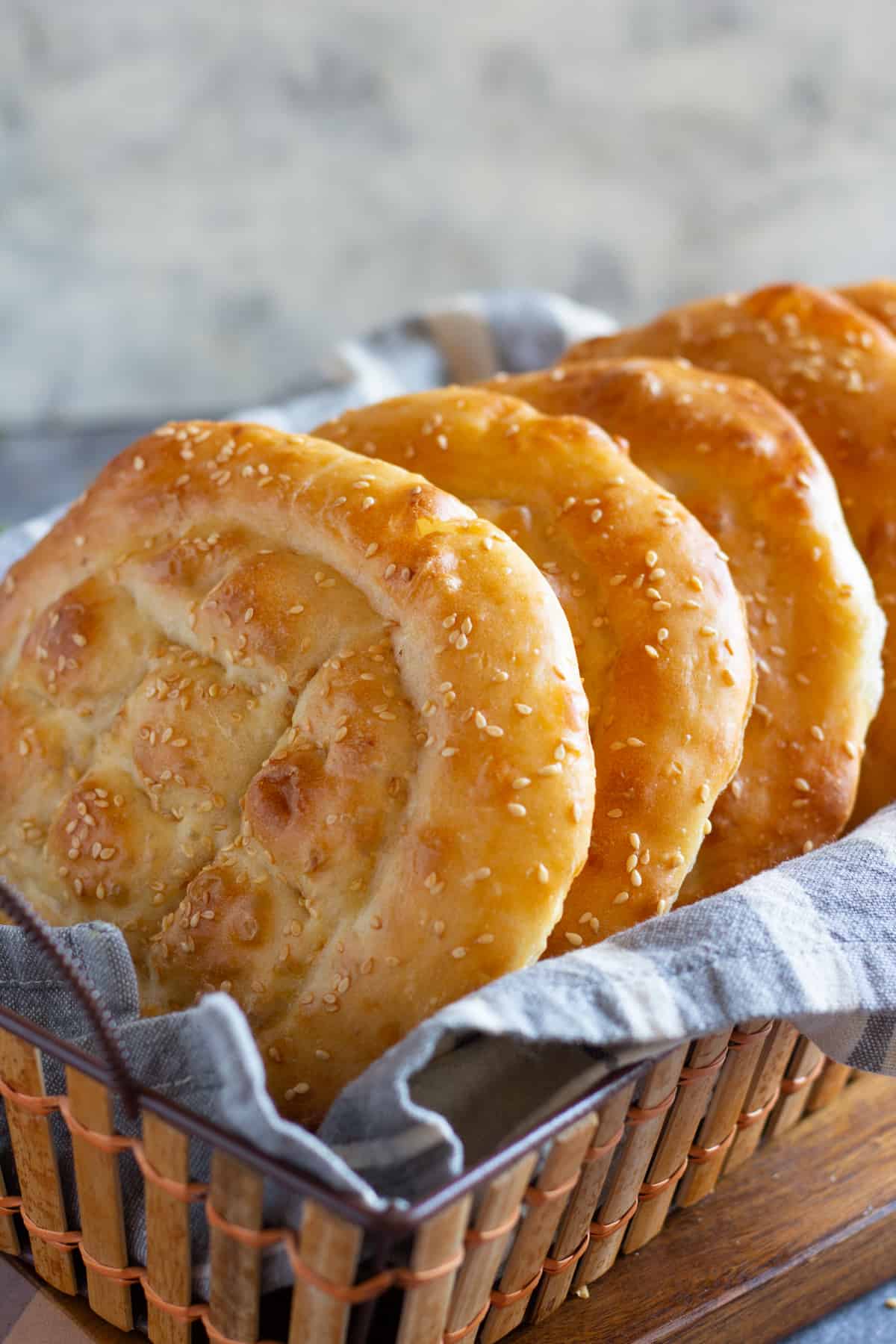
Notes and tips
- Make 2 large loaves instead of 8 small ones: It’s common to make large Turkish pide bread as well. To do so, cut the dough into 2 pieces instead of 8 and proceed with the recipe as instructed. Bake at 400ºF for 20 to 25 minutes until the top is golden.
- It’s important to cover the pide with damp paper towel once it’s out of the oven to keep it soft.
- To reheat the bread, sprinkle very little water on the bread and heat in the oven at 250ºF for 5 to10 minutes.
- Make sure to brush the dough balls with the glaze as it would make rolling out the dough much easier. You don’t need to use a rolling pin to roll out the dough.
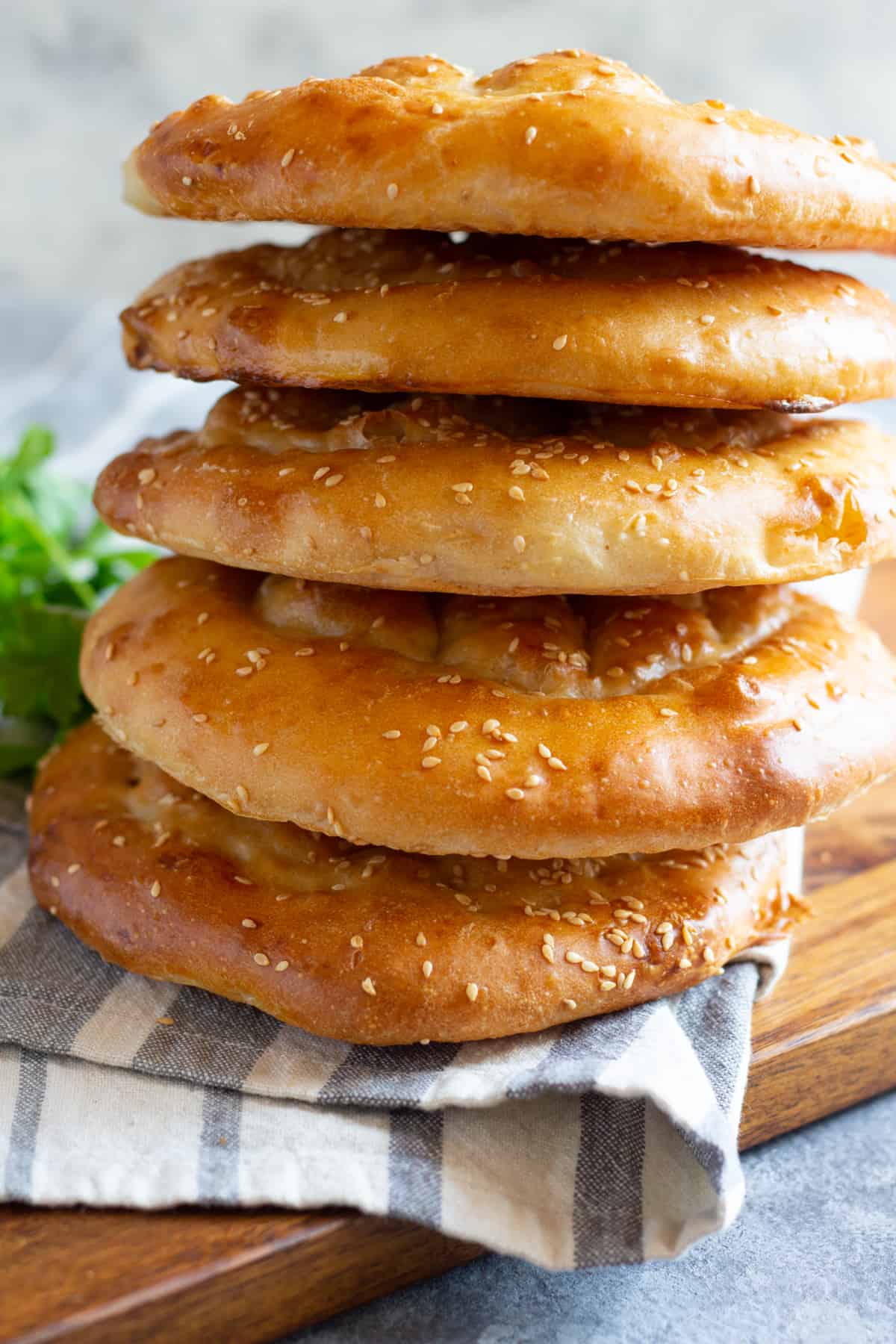
More Turkish recipes
Turkish Recipes
Turkish Simit Recipe (Step-by-Step tutorial)
Mediterranean recipes
Turkish Bulgur Pilaf Recipe
Mediterranean recipes
Turkish Vegan Lentil Balls (Mercimek Köftesi)
Mediterranean recipes
Turkish Red Lentil Soup (Mercimek Corbasi)
Did you make this recipe? I’d love to hear about it! Please comment and leave a 5-star🌟 rating below. You can also follow us on Instagram, Facebook, Pinterest or subscribe to our newsletter to get a free e-Cookbook!
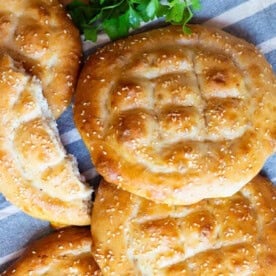
Turkish Pide Bread (Ramazan Pidesi)
Ingredients
- 1 cup milk, warm
- 1 cup water, warm
- 3 tbsp olive oil
- 1 tsp sugar
- 1/2 tsp salt
- 2 1/4 tsp instant dry yeast
- 1 large egg white
- 4 1/2 cup all purpose flour
Yogurt Egg Glaze
- 1 large egg yolk
- 1 tbsp plain yogurt
- 1 tbsp water
- 2 tbsp sesame seeds, to top
Instructions
- In a large bowl mix milk, water, olive oil, sugar, salt, instant dry yeast and egg white.
- Add the flour in batches and mix until the dough comes together.
- Cover and let it sit at room temperature for 30 minutes to rise.
- Sprinkle your surface generously with flour. Transfer the dough from the bowl to the surface and shape it into a boule. Cut the dough into 8 pieces.
- Line a baking sheet with a parchment paper and place two of the dough balls on the baking sheet. Cover loosely and let them rise for 20 minutes.
- Meanwhile preheat the oven to 400ºF and place an empty baking dish in the lower rack.
- Mix the egg yolk, yogurt and water in a small bowl and set aside. This will be your glaze. Brush with some of the glaze and using your fingers, spread the dough into a round circle with 1/2 inch thickness.
- Using your fingers, make indentations on the dough about 1 inch from the edge to make a circle. Then with your fingers make diagonal indentations in two different directions to make diamonds inside that circle. Cover with a plastic wrap and let it sit for 10 minutes. Repeat the same process with the remaining 6 dough balls.
- Once the oven is hot, uncover the prepared dough and make the indentations again. Top with sesame seeds and place the baking sheet on the middle rack.
- Fill the baking dish on the lower rack with 2 cups of water and close the oven door. Bake in the oven for 15-18 minutes until golden on top.
- Once out of the oven, cover the loaves with a damp paper towel. The steam of the bread with be trapped and your bread will be soft and fluffy. Repeat the baking process with the remaining loaves.
Video
Notes
- Make 2 large loaves instead of 8 small ones: It’s common to make large Turkish pide bread as well. To do so, cut the dough into 2 pieces instead of 8 and proceed with the recipe as instructed. Bake at 400ºF for 20 to 25 minutes until the top is golden.
- It’s important to cover the pide with damp paper towel once it’s out of the oven to keep it soft.
- To reheat the bread, sprinkle very little water on the bread and heat in the oven at 250ºF for 5 to10 minutes.
- Make sure to brush the dough balls with the glaze as it would make rolling out the dough much easier. You don’t need to use a rolling pin to roll out the dough.
Nutrition
Nutrition information is automatically calculated, so should only be used as an approximation.
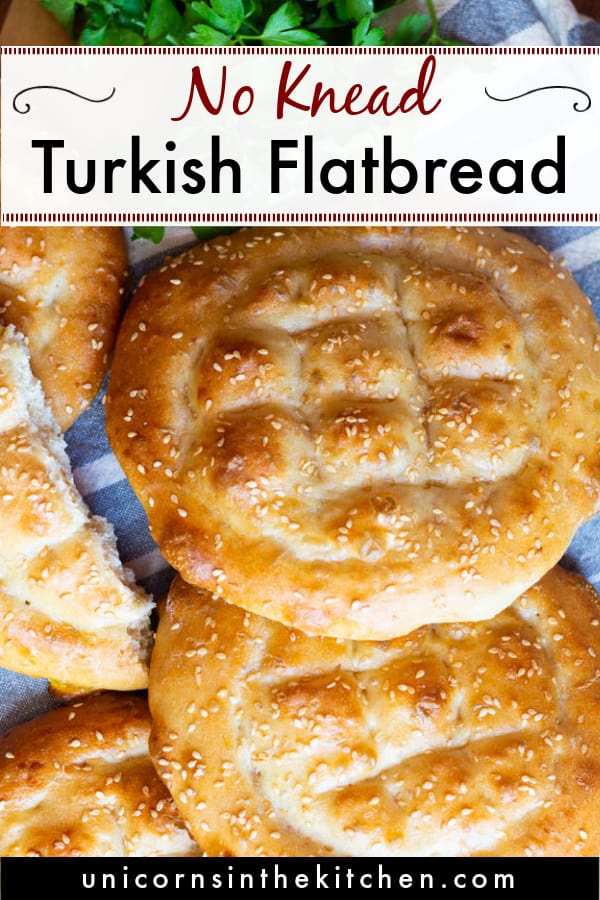

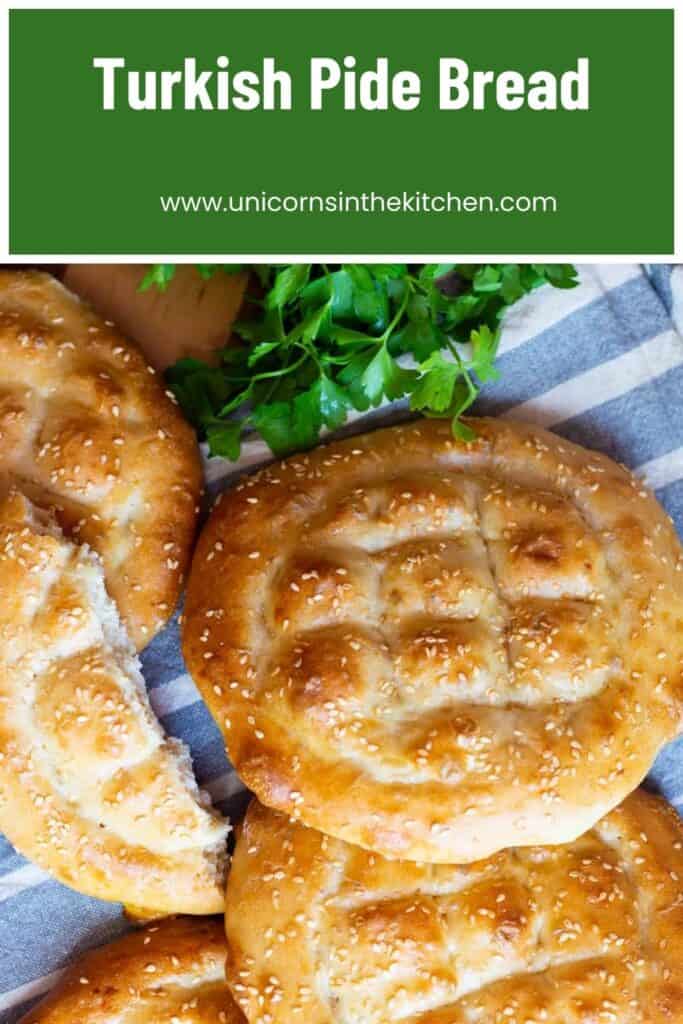
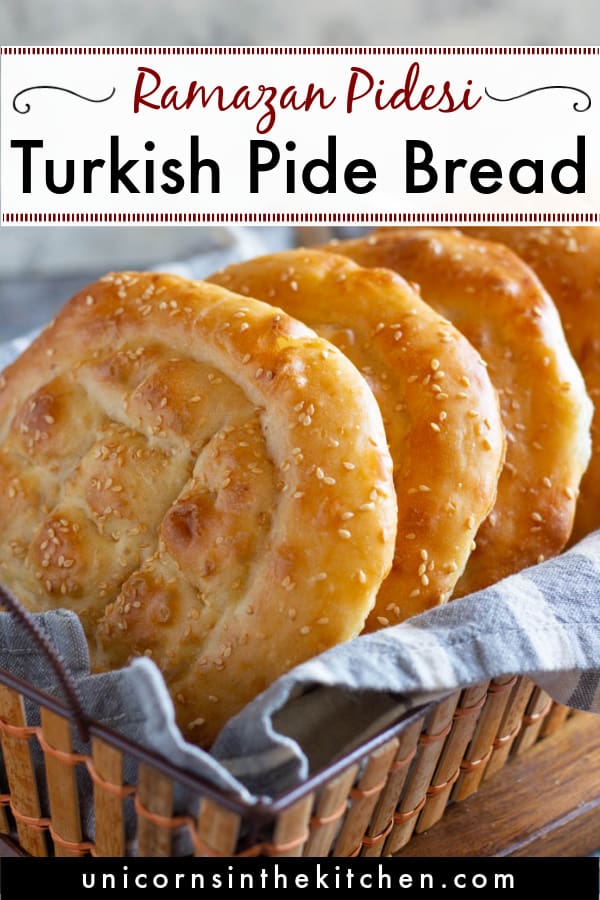
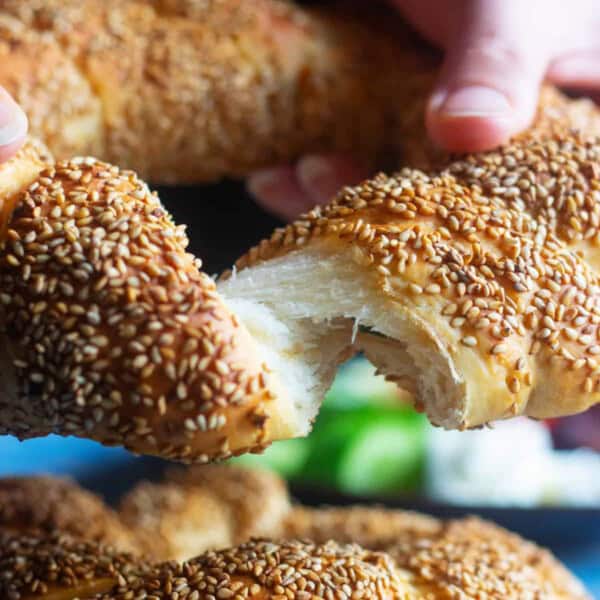
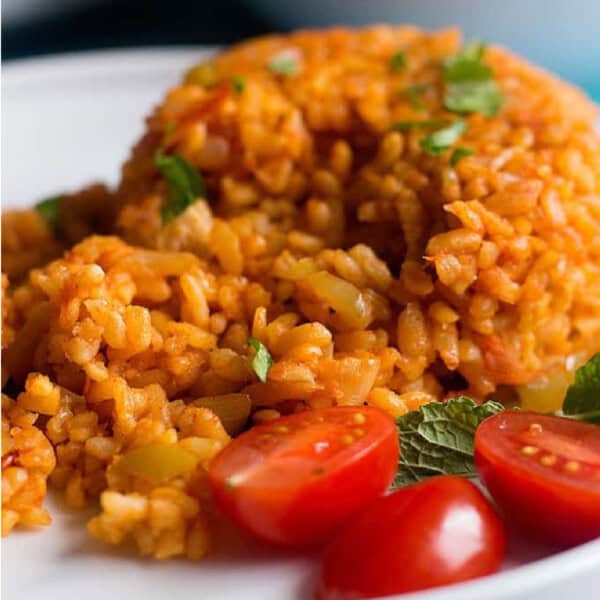











When we lived in NC we had a Turkish restaurant we loved going to and we always ordered some pide! I’d never made it before but had to give it a shot and this was awesome. Easier than I thought, thanks to your clear instructions. I’ll def make this again! Thanks so much 🙂
This pide bread is so fluffy and flavorful. Plus, I love knowing how to make this traditional recipe!
I love how golden on the outside and soft and fluffy on the inside this bread is! I’d never had this until I found your recipe, and now it’s my new favorite bread!
Outstanding recipe thanks so much! tasted so much good!
This is easy to make and is fluffy and wonderful! Thank you!
fantastic even with substitutions. pekmez and h2o for glaze. coconut cream in dough, no egg. font is to pale and small to read so hope the comment makes sense
I would like to make this bread with filling/cheese+ spinach or meat. Do you think that would work?
Are you thinking of pide, as in the dish pide, the one the looks like a boat and has different toppings? If so, that’s a different recipe that’s coming soon. You can probably top this one with the ingredients you mentioned, however, it won’t be the classic recipe. But, it will taste good!
Wow that looks so good! I’m amazed at how easy to make it sounds. I”ll have to try it this weekend.